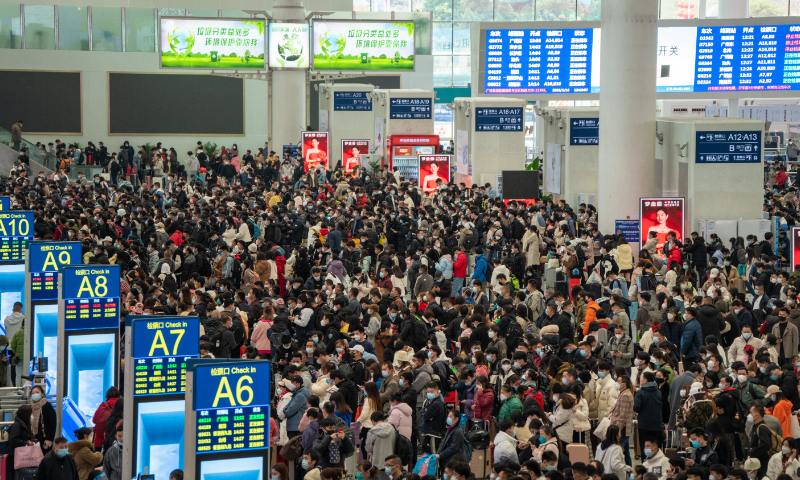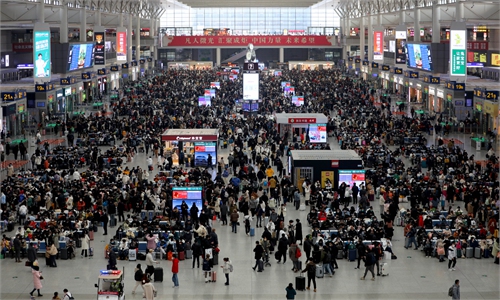
A view of Shenzhen North Railway Station on January 16, 2023 Photo: VCG
Travel in China saw a significant rebound during the 2023 Spring Festival travel rush, the world's largest annual human migration, underscoring the resilience and vitality of the economy.
During the 40-day travel rush, which lasted from January 7 to Wednesday, 4.73 billion passenger trips were made. Nearly 1.6 billion trips took place via trains, planes and waterways, recovering to 53.5 percent of pre-pandemic levels in 2019, according to data released by the Ministry of Transport on Thursday.
The Spring Festival travel rush, also known as chunyun, is a barometer of the Chinese economy. This was the first Spring Festival after China downgraded COVID-19 management from Class A to Class B from January 8, and it has attracted special attention.
China State Railway Group said on Thursday that 348 million trips were made by rail during the 40-day travel rush, a year-on-year increase of 37.4 percent. On average, 8.7 million passenger trips were made each day.
The country's civil aviation sector carried 55.23 million passengers during the past 40 days, up 39 percent from last year and reaching 76 percent of the level in 2019, data from the Civil Aviation Administration of China showed.
"The significant rebound in passenger traffic reflects that China's economy is returning to normal track, and the economy will post sound growth thanks to its strong resilience and huge consumption potential," Dong Yan, a senior researcher of global economics and politics with the Chinese Academy of Social Sciences in Beijing, told the Global Times on Thursday.
From production resumption in a wide range of sectors to growth in export orders and booming consumer spending, more facts show that the Chinese economy has revived quickly.
Recently, provincial governments across the country intensively launched a new batch of infrastructure projects to propel a faster economic recovery. Shijiazhuang, capital of North China's Hebei Province, on Wednesday announced the launch of 538 key projects, worth 144.7 billion yuan.
According to the People's Bank of China, the central bank, China's new yuan-denominated loans totaled 4.9 trillion yuan ($721.82 billion) in January, beating market expectations of 4.2 trillion yuan.
UBS economists led by Wang Tao forecast that the actual growth rate of China's overall consumption, involving household and government spending, would likely grow by 6.7 percent in 2023, according to a note sent to the Global Times on Wednesday.
Dong said that China will continue to drive global growth in 2023, given the country's irreplaceable role in global industrial and supply chains and its leading role in technological innovation in sectors including the green and digital economy.



